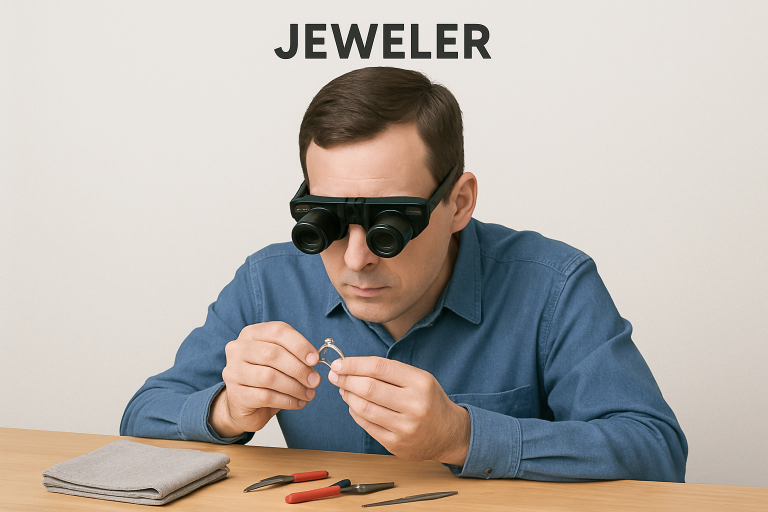Key Takeaways:
- Jewelry repair involves several meticulous steps, including assessment, repair, inspection, and polishing.
- Factors like repair complexity, material availability, and the jeweler’s workload influence the timeline.
- Choosing trusted repair services can ensure your cherished pieces receive excellent care and restoration.
Table of Contents:
- Initial Assessment and Consultation
- Providing an Estimate and Timeframe
- Cleaning and Preparation
- Repair Techniques and Methods
- Quality Control and Inspection
- Final Polishing and Cleaning
- Return to the Customer
- Factors Influencing Repair Timelines
Jewelry is more than an accessory – it symbolizes milestones, family traditions, or personal achievements. When a piece breaks or shows signs of wear, seeking trusted repair services is the first step in protecting these memories and investments. Knowing how the process unfolds helps you confidently leave your most treasured items in expert hands.
This guide outlines what you can expect during a typical jewelry repair journey, from the initial evaluation to returning your beautifully restored piece.
Initial Assessment and Consultation
Your repair experience begins with a professional assessment by a jeweler. During this stage, the jeweler examines your jewelry for structural issues, like loose settings, broken chains, or worn prongs. They will likely ask about your piece’s history and repair priorities, ensuring you’re part of the decision-making process. This early dialogue is essential for understanding the repair’s scope and setting expectations from the start.
Providing an Estimate and Timeframe
After inspection, you will receive a detailed estimate covering both costs and estimated timeframes. Simple repairs, such as clasp replacements or ring resizing, may only take a few days. However, more complex restorations – like rebuilding antique filigree or sourcing rare gemstones – can stretch over several weeks. This transparency helps you plan around sentimental or meaningful events, especially if your jewelry is for a special occasion.
Cleaning and Preparation
Before starting any actual repair, your jewelry is thoroughly cleaned. Removing built-up oils or dirt allows the jeweler to identify every area needing attention. Standard cleaning methods include ultrasonic machines for sturdy gemstones, while softer stones and antique pieces might be gently cleaned by hand. Proper preparation at this stage ensures that the repair work proceeds without interference and delivers a flawless result.
Repair Techniques and Methods
The specific restoration methods depend on your jewelry’s needs. Some commonly used techniques include:
- Soldering: Ideal for repairing split chains, broken clasps, or disconnected components. Skilled jewelers use precision tools to apply heat and join delicate sections without affecting nearby gems.
- Prong Re-tipping: Prongs that secure gemstones can wear down over time, risking stone loss. Re-tipping involves adding new metal to the tips, protecting your gems for years to come.
- Stone Replacement: Lost or chipped stones are matched and replaced with carefully sourced gemstones. The new stones are reset with exacting attention to aesthetics and security.
- Resizing: For rings or bangles, resizing ensures comfort and safety. Jewelers make seamless adjustments so the sizing is invisible and durable.
In all cases, these techniques rely heavily on dexterity, precision, and an understanding of materials to achieve a beautiful and long-lasting repair.
Quality Control and Inspection
Following repair, a jeweler undertakes detailed quality checks. Stones are tested for stability, moving parts (like clasps) are checked for function, and the overall craftsmanship is assessed. This inspection ensures no detail is overlooked and that the piece is secure, functional, and as visually appealing as when first crafted.
Final Polishing and Cleaning
The finishing touch to any jewelry repair is polishing and comprehensive cleaning. This step removes fingerprints, debris, or any residue from the repair. High-quality jewelers often use professional buffing wheels and cleansers that impart a radiant finish, making your piece look revitalized. A protective, anti-tarnish coating may be applied for silver or gold to further guard against future damage.
Return to the Customer
After passing all inspections and cleaning, your jewelry is ready for pick-up. Reputable jewelers provide care instructions, advising on cleaning schedules or safe storage to keep your piece in prime condition. They may also recommend periodic inspections, especially for settings or components that endure daily wear.
Factors Influencing Repair Timelines
Complexity and Craftsmanship
Intricate repairs – like work on filigree or antique pieces – demand extra time and meticulous handcrafting that cannot be rushed. Each piece’s design complexity will significantly affect the repair time.
Material Sourcing
If the repair requires specialty metals or rare gemstones, sourcing these from trusted suppliers may add days or weeks. Custom requests, such as matching an heirloom diamond, can extend timelines but are vital for authenticity.
Jeweler’s Workload
Busy seasons or a high volume of ongoing projects at the jewelry shop may affect turnaround times. Communication with your jeweler and understanding their schedule ensures no surprises regarding delivery dates.
By understanding every step in the repair process, you can approach jewelry repairs with assurance and peace of mind. Carefully selecting experienced professionals helps guarantee that even your most sentimental pieces will be restored to their original splendor and ready for new memories.





